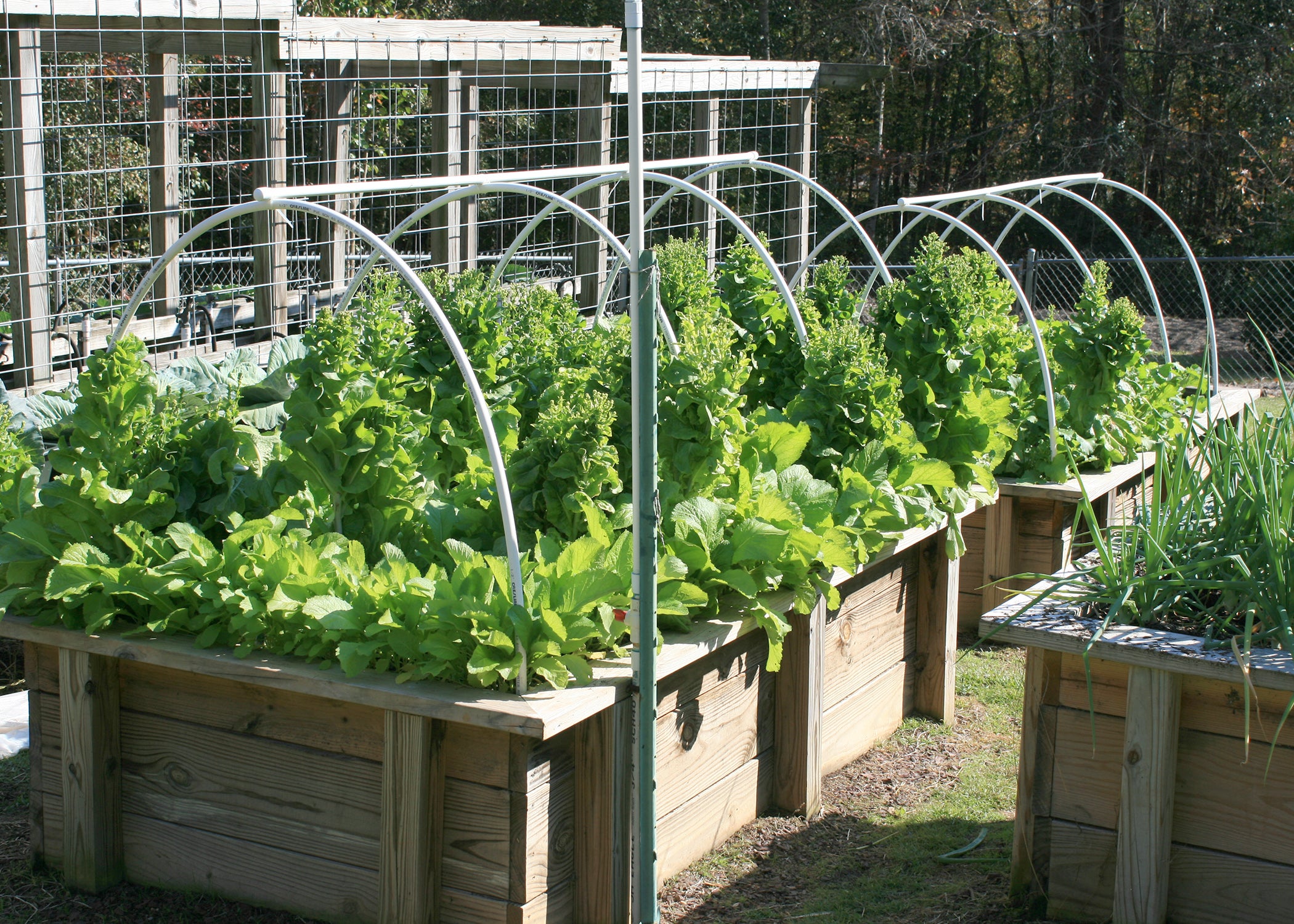Container gardens offer ease, accessibility, variety
Published 3:35 pm Thursday, April 29, 2021

- RAISED BEDS -- Raised beds are one way to container garden. Gardeners grow flowers and vegetables in above-ground boxes that contain soil. (Photo by MSU Extension Service/Gary Bachman) Alt text -- Plants grow from wooden boxes that have an overhead, curved pipe system. ###
By Bonnie Coblentz
MSU Extension Service
STARKVILLE, Miss. — Mississippi’s long growing season means potential gardeners have until at least July to start growing vegetables, but the state’s ideal gardening climate also means weeds and pests are constant threats.
Gardeners often grow flowers in containers to add pops of color and spots of greenery in otherwise unworkable areas, and they can be equally successful using containers to grow vegetables.
Small pots and cans that hold a quart or more can grow herbs, radishes, lettuce, strawberries and other small plants. Tomatoes, peppers, squash, eggplants and other large plants need containers that hold 5 gallons or more. Old ice chests, bathtubs, barrels and other large containers can be called into duty.
Gary Bachman, a horticulturist with the Mississippi State University Extension Service, often urges readers and viewers of the popular Southern Gardening video and print series to consider growing almost anything in a container.
“Everything in my coastal Mississippi landscape and garden grows in some form of container,” said Bachman, who works from the Coastal Research and Extension Center in Biloxi. “Growing in containers gives me the sense of control I want in the garden.”
The first step is deciding what kind of container to use. Container gardening can include the use of raised beds as well as all sizes of decorative or repurposed receptacles.
“One of the fun aspects of growing in containers is picking out the container itself,” Bachman said. “You can use classics like terra cotta and glazed ceramics. These tend to be very heavy, so you may decide to look for containers made out of foam-like materials that look every bit like their heavier cousins.”
Basic black plastic pots also work, and these tend to be the least expensive option.
Gardeners who have always grown plants in the ground need to know that things will be different when making the switch to container gardening. Soil is the first consideration.
Bachman said the correct “soil” is not soil at all, but a correct mix of organic components like peat moss, coir fiber or bark, and inorganic components like vermiculite and perlite.
“I like to use commercial bagged container mixes that have been engineered for optimum physical characteristics and great plant performance. They are found under a variety of trade names, but each of these is similar in its basic recipe,” he said.
There is no need to add gravel or other bulky material to the bottom of the container to increase drainage. A proper container mixture added to a container with drain holes is sufficient.
Proper watering is the next consideration.
“Since a container is effectively self-contained, you must consistently water based on the particular requirements of the plants you are growing,” Bachman said. “Never just apply a splash of water; instead, keep watering until you see water flow from the holes in the bottom of the container.”
Bachman said the best way to water raised beds is with drip irrigation that applies water directly to the soil around the plants.
“Plant stress is reduced significantly by maintaining consistent root zone moisture, and water usage is reduced up to 70% compared to overhead sprinklers,” he said.
Consider the plant’s need for nutrients next. Many commercial container mixes have some added fertilizer.
It helps get the plants off to a good start but is not nearly enough to sustain satisfactory growth through the season.
“I always feed my container plants with controlled-release fertilizer at planting, and I supplementally feed with water-soluble fertilizer through the growing season,” Bachman said.
Jeff Wilson, an MSU Extension horticulturist at the North Mississippi Research and Extension Center in Verona, said those who tried traditional gardening in the past and were discouraged may find new opportunities when gardening in containers.
“Container gardening is available to anybody in Mississippi who has sunlight and a source of water,” Wilson said.
Containers elevate the plants above ground level, making garden maintenance easier on the body. But that is not the only advantage.
“In most cases, those who choose to garden in containers purchase the soil for their containers, and this means the soil is usually free of insects, weeds and disease organisms,” Wilson said.
“This limits the opportunity for pests to become a major issue, and weeds are rarely a problem if you use high-quality soil in your containers.”
When weeds do show up, they can easily be removed by hand, especially when gardeners remain vigilant. Wilson recommends checking twice a week for weeds and removing them when they sprout.
“Start with fresh soil each season,” he said. “There is still a need to scout daily for insects when using a container garden, as these pests can crawl or fly into the plant area.”
Find help and information related to starting or maintaining a container garden in a variety of publications and on the Extension website at http://extension.msstate.edu.




